Tool List
Top AI Tools for Interior Designers
AI tools for interior designers revolutionize the design process by offering virtual design assistance, space planning, and 3D visualization. These tools can analyze space, suggest layout options, and even simulate the effects of different furniture and decor choices, helping designers and clients visualize the final result. Costs for AI interior design tools vary, with some offering free versions or pay-as-you-go pricing while others charge monthly subscriptions from $10 to $100 or more. AI in interior design is beneficial as it improves design accuracy, enhances client communication, and saves time for designers, making it a valuable asset for creating stunning and functional spaces.

Virtual Staging
Upload a picture and our AI will add furniture within seconds.
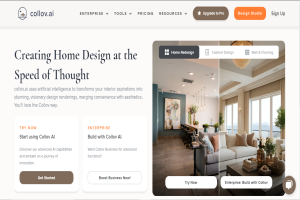
Collov
collov.ai uses artificial intelligence to transforms your interior aspirations into stunning, visionary design rendering...

Home Designs
Upload your photo, choose a mode and pick from over 75 design styles. Reimagine Any Home Interior, Exterior, or Garden u...
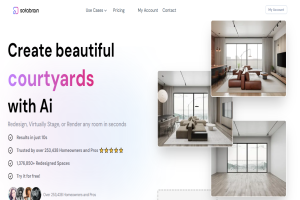
SofaBrain
Redesign, Virtually Stage, or Render any room in seconds Results in just 10s Trusted by over 253,438 Homeowners and...

Home styler
All-in-one Online Interior Design: Floor Planning, Modeling & Rendering
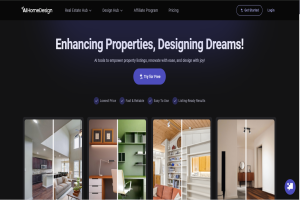
AI Home design
AI tools to empower property listings, renovate with ease, and design with joy!

Reimagine
Swift, easy to use, zero-learning-curve AI for Virtual Staging, Remodeling, Landscaping, Interior Designing, & beyond –...
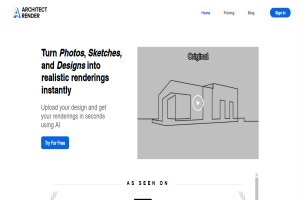
Architechrender
Upload your design and get your renderings in seconds using AI

Room
Turn your ideas into professional interior designs with our easy-to-use AI software
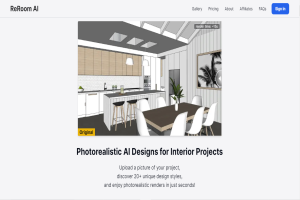
Reroom
Upload a picture of your project, discover 20+ unique design styles, and enjoy photorealistic renders in just seconds!

Decor
DecorAI's AI-powered tool generates unique and personalized designs based on your client's room layout. You can easily c...
Frequently Asked Questions
AI tools for interior designers are software applications that use artificial intelligence to assist with various aspects of interior design, such as space planning, color matching, furniture selection, and layout optimization.
AI tools streamline the design process by automating time-consuming tasks like creating floor plans, generating 3D models, and suggesting design elements based on trends and user preferences, thereby increasing efficiency and accuracy.
Yes, AI tools can analyze images and existing interiors to suggest complementary color schemes and materials that align with current trends and personal preferences.
Many AI tools are capable of generating 3D models from simple sketches or descriptions, allowing designers and clients to visualize and explore design concepts more effectively.
AI tools can create interactive platforms where designers and clients collaborate, make real-time changes, and visualize outcomes instantly, which improves clarity and decision-making efficiency.
AI tools analyze large datasets from design platforms, social media, and past projects to identify and predict emerging trends, helping designers stay ahead in their field.
Yes, these tools often allow clients to input their preferences, budget, and space constraints to generate designs that are tailored to their specific needs and tastes.
AI algorithms can analyze the dimensions and functional requirements of a space to propose the most effective layouts, ensuring optimal use of every area.
Yes, some AI tools are specialized for residential or commercial projects, taking into account the unique needs and regulations associated with each type of space.
Many AI tools are designed to be compatible with popular design software like AutoCAD, SketchUp, and Revit, facilitating a seamless integration into the designer’s workflow.
Basic training on the specific AI tool is usually sufficient. Most platforms are user-friendly, with intuitive interfaces and tutorials that help designers get up to speed quickly.
AI can suggest materials and designs that are environmentally friendly and energy-efficient, helping designers create spaces that are both beautiful and sustainable.
Yes, AI tools can simulate how different lighting conditions affect a space at various times of the day, which aids in making informed decisions about window placements and lighting fixtures.
While AI tools offer significant advantages, they may not fully capture the nuanced aesthetic judgment and personal touch that experienced designers bring to a project.
The future of AI in interior design looks promising, with advancements likely to include more advanced VR integration, improved real-time collaboration tools, and even greater personalization capabilities, enabling designers to create more innovative and client-focused designs.
Frequently Asked Questions
Q: What are AI tools for interior designers?
A: AI tools for interior designers are software applications that use artificial intelligence to assist with various aspects of interior design, such as space planning, color matching, furniture selection, and layout optimization.
Q: How do AI tools benefit interior designers?
A: AI tools streamline the design process by automating time-consuming tasks like creating floor plans, generating 3D models, and suggesting design elements based on trends and user preferences, thereby increasing efficiency and accuracy.
Q: Can AI tools help choose colors and materials?
A: Yes, AI tools can analyze images and existing interiors to suggest complementary color schemes and materials that align with current trends and personal preferences.
Q: Are there AI tools that can create 3D models of design concepts?
A: Many AI tools are capable of generating 3D models from simple sketches or descriptions, allowing designers and clients to visualize and explore design concepts more effectively.
Q: How do AI tools facilitate client-designer communication?
A: AI tools can create interactive platforms where designers and clients collaborate, make real-time changes, and visualize outcomes instantly, which improves clarity and decision-making efficiency.
Q: Can AI predict interior design trends?
A: AI tools analyze large datasets from design platforms, social media, and past projects to identify and predict emerging trends, helping designers stay ahead in their field.
Q: Do AI tools offer customization options for clients?
A: Yes, these tools often allow clients to input their preferences, budget, and space constraints to generate designs that are tailored to their specific needs and tastes.
Q: How do AI tools handle space optimization?
A: AI algorithms can analyze the dimensions and functional requirements of a space to propose the most effective layouts, ensuring optimal use of every area.
Q: Are there AI tools specifically for residential vs. commercial design?
A: Yes, some AI tools are specialized for residential or commercial projects, taking into account the unique needs and regulations associated with each type of space.
Q: Can AI tools integrate with other software used by interior designers?
A: Many AI tools are designed to be compatible with popular design software like AutoCAD, SketchUp, and Revit, facilitating a seamless integration into the designer’s workflow.
Q: What kind of training is required to use AI tools in interior design?
A: Basic training on the specific AI tool is usually sufficient. Most platforms are user-friendly, with intuitive interfaces and tutorials that help designers get up to speed quickly.
Q: How do AI tools enhance sustainability in interior design?
A: AI can suggest materials and designs that are environmentally friendly and energy-efficient, helping designers create spaces that are both beautiful and sustainable.
Q: Can AI tools simulate different lighting conditions in a design?
A: Yes, AI tools can simulate how different lighting conditions affect a space at various times of the day, which aids in making informed decisions about window placements and lighting fixtures.
Q: What are the limitations of using AI in interior design?
A: While AI tools offer significant advantages, they may not fully capture the nuanced aesthetic judgment and personal touch that experienced designers bring to a project.
Q: What is the future of AI tools in interior design?
A: The future of AI in interior design looks promising, with advancements likely to include more advanced VR integration, improved real-time collaboration tools, and even greater personalization capabilities, enabling designers to create more innovative and client-focused designs.
Frequently Asked Questions
Q: What are AI tools for interior designers?
A: AI tools for interior designers are software applications that use artificial intelligence to assist with various aspects of interior design, such as space planning, color matching, furniture selection, and layout optimization.
Q: How do AI tools benefit interior designers?
A: AI tools streamline the design process by automating time-consuming tasks like creating floor plans, generating 3D models, and suggesting design elements based on trends and user preferences, thereby increasing efficiency and accuracy.
Q: Can AI tools help choose colors and materials?
A: Yes, AI tools can analyze images and existing interiors to suggest complementary color schemes and materials that align with current trends and personal preferences.
Q: Are there AI tools that can create 3D models of design concepts?
A: Many AI tools are capable of generating 3D models from simple sketches or descriptions, allowing designers and clients to visualize and explore design concepts more effectively.
Q: How do AI tools facilitate client-designer communication?
A: AI tools can create interactive platforms where designers and clients collaborate, make real-time changes, and visualize outcomes instantly, which improves clarity and decision-making efficiency.
Q: Can AI predict interior design trends?
A: AI tools analyze large datasets from design platforms, social media, and past projects to identify and predict emerging trends, helping designers stay ahead in their field.
Q: Do AI tools offer customization options for clients?
A: Yes, these tools often allow clients to input their preferences, budget, and space constraints to generate designs that are tailored to their specific needs and tastes.
Q: How do AI tools handle space optimization?
A: AI algorithms can analyze the dimensions and functional requirements of a space to propose the most effective layouts, ensuring optimal use of every area.
Q: Are there AI tools specifically for residential vs. commercial design?
A: Yes, some AI tools are specialized for residential or commercial projects, taking into account the unique needs and regulations associated with each type of space.
Q: Can AI tools integrate with other software used by interior designers?
A: Many AI tools are designed to be compatible with popular design software like AutoCAD, SketchUp, and Revit, facilitating a seamless integration into the designer’s workflow.
Q: What kind of training is required to use AI tools in interior design?
A: Basic training on the specific AI tool is usually sufficient. Most platforms are user-friendly, with intuitive interfaces and tutorials that help designers get up to speed quickly.
Q: How do AI tools enhance sustainability in interior design?
A: AI can suggest materials and designs that are environmentally friendly and energy-efficient, helping designers create spaces that are both beautiful and sustainable.
Q: Can AI tools simulate different lighting conditions in a design?
A: Yes, AI tools can simulate how different lighting conditions affect a space at various times of the day, which aids in making informed decisions about window placements and lighting fixtures.
Q: What are the limitations of using AI in interior design?
A: While AI tools offer significant advantages, they may not fully capture the nuanced aesthetic judgment and personal touch that experienced designers bring to a project.
Q: What is the future of AI tools in interior design?
A: The future of AI in interior design looks promising, with advancements likely to include more advanced VR integration, improved real-time collaboration tools, and even greater personalization capabilities, enabling designers to create more innovative and client-focused designs.